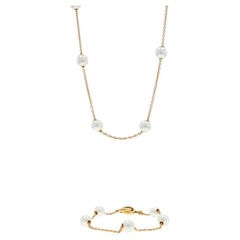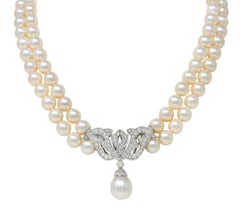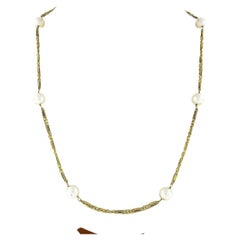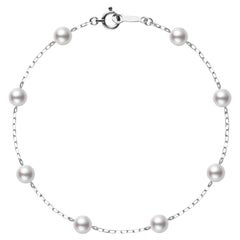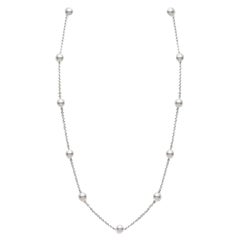Mikimoto Station
21st Century and Contemporary Chain Necklaces
Pearl, 18k Gold, Yellow Gold
Vintage 1950s Modern Multi-Strand Necklaces
Diamond, Pearl, Platinum
Vintage 1960s Beaded Necklaces
Pearl, 14k Gold
Recent Sales
2010s Chain Bracelets
2010s Chain Necklaces
Cultured Pearl, White Gold
2010s Chain Necklaces
2010s Chain Necklaces
2010s Chain Necklaces
2010s Charm Bracelets
2010s Chain Bracelets
2010s Chain Bracelets
Cultured Pearl, White Gold
21st Century and Contemporary More Necklaces
Pearl, Gold, 18k Gold, Yellow Gold
21st Century and Contemporary Contemporary Chain Bracelets
Pearl, Gold, 18k Gold, Yellow Gold
21st Century and Contemporary Japanese Modern Chain Necklaces
Pearl, 18k Gold, White Gold
2010s Chain Bracelets
2010s Chain Bracelets
21st Century and Contemporary More Necklaces
White Gold
21st Century and Contemporary More Necklaces
White Gold
2010s Chain Necklaces
People Also Browsed
1990s Japanese Beaded Necklaces
Pearl, Gold
1990s Asian Multi-Strand Necklaces
Diamond, Pearl, 18k Gold, Yellow Gold
2010s French Pendant Necklaces
Diamond, White Gold
20th Century French Dome Rings
Pearl, Gold, 18k Gold, Yellow Gold
Vintage 1930s French Art Deco Pendant Necklaces
Pearl, Gold
Mid-20th Century Beaded Necklaces
Pearl, Sterling Silver
Early 20th Century Unknown Cocktail Rings
Diamond, Turquoise, 14k Gold
Vintage 1940s Unknown Art Deco Rope Necklaces
Pearl, 18k Gold
Antique 19th Century Beaded Necklaces
Amber, 14k Gold, Gold
21st Century and Contemporary Japanese Dangle Earrings
Diamond, South Sea Pearl, White Gold
21st Century and Contemporary Italian Artist Pendant Necklaces
White Diamond, Onyx, Pearl, South Sea Pearl, Diamond, 18k Gold, White Gold
20th Century Edwardian Pendant Necklaces
Diamond, Pearl, Platinum
2010s Thai Art Deco Cocktail Rings
Diamond, Ruby, 18k Gold
Antique Late 19th Century European Victorian Dangle Earrings
Diamond, Natural Pearl, 18k Gold
21st Century and Contemporary Pendant Necklaces
Diamond, Gold, Silver
2010s Drop Necklaces
Diamond, Pearl, 18k Gold, White Gold
Mikimoto Station For Sale on 1stDibs
How Much is a Mikimoto Station?
Mikimoto for sale on 1stDibs
Born to a noodle-shop owner, Japanese jeweler Kokichi Mikimoto (1858–1954) worked in the seafood business before shifting his focus to pearl cultivation. In 1893, he successfully developed the world’s first cultured pearls with a semispherical specimen. His further experimentation would include black and white South Sea pearls. This development gave Mikimoto a supply of what had once been a notoriously rare natural element and earned him the nickname “The Pearl King.” As he once said, “My dream is to adorn the necks of all women around the world with pearls.”
In 1899 in Tokyo’s Ginza district, Mikimoto opened his first, eponymous store in a white-stone building reminiscent of the color of pearls. He quickly earned a reputation for dazzling designs that blended Japanese craftsmanship and European influence. Mikimoto sent his jewelers to Europe to study the latest trends in jewelry and design; they brought back knowledge of Art Deco and Art Nouveau styles, which were incorporated into designs featuring Mikimoto’s pearls.
But Mikimoto’s creations were not met with enthusiasm by all. In 1921, a London newspaper called the designer’s jewelry “only imitations of real pearls” and claimed the company was “misleading” its customers. It developed into a lawsuit in the French courts, which ruled in Mikimoto’s favor, and raised the jeweler’s global profile.
He also brought his work international acclaim through exhibitions and world’s fairs, including the 1926 Sesquicentennial Exposition in Philadelphia where he unveiled a replica of the Liberty Bell covered with pearls. In 1927, Mikimoto met with Thomas Edison, who gave the jeweler’s invention probably its best compliment: “It is one of the wonders of the world that you were able to culture pearls. . . . This isn’t a cultured pearl, it’s a real pearl.”
Following World War II, Mikimoto opened stores around the world, with locations now in Paris, New York City, Los Angeles and Shanghai. Though its founder died in 1954, the Mikimoto company has continued to build on the legacy he established, producing collections of pearl necklaces and other pearl-centric jewelry that span a wide range of styles.
In 2017, the brand reopened its flagship Tokyo store, tapping architect Hiroshi Naito to design a new glittering facade whose 40,000 tiny glass plates are meant to evoke the movement of the ocean as they catch the light. The place where Mikimoto had his legendary success over a century ago is now known as Mikimoto Pearl Island and includes a museum on his life and pearls. A highlight is the “Boss’s Necklace,” which was the first made by Mikimoto and is the model for all the brand’s classic strands that have followed.
Find Mikimoto pendant necklaces, choker necklaces and a range of other jewelry on 1stDibs.
- 1stDibs ExpertMarch 22, 2022Yes, Mikimoto pearls tend to at least hold their value over time. In some cases, the value of the brand's pearl jewelry increases over time due to demand and the effects of inflation. Keep in mind that the value of any piece of jewelry depends on its condition. Properly storing and caring for your pieces can help to ensure that they retain their value for years to come. On 1stDibs, shop a selection of Mikimoto pearl jewelry.
- Are Mikimoto pearls Akoya?2 Answers1stDibs ExpertAugust 17, 2021No, not all Mikimoto pearls are Akoya. Mikimoto also uses Black South Sea cultured pearls, White South Sea cultured pearls, Golden South Sea cultured pearls, and Conch pearls to create their jewelry. Shop Mikimoto Akoya pearl jewelry on 1stDibs.1stDibs ExpertMarch 22, 2022Yes, Mikimoto pearls are Akoya, meaning they come from Akoya oysters. The brand largely pioneered the production of cultured pearls, which are genuine pearls developed with human assistance. Mikimoto creates Akoya pearl necklaces, pendants, earrings, bracelets, rings and brooches. On 1stDibs, shop a variety of Mikimoto pearl jewelry.
- 1stDibs ExpertOctober 12, 2021How much a Mikimoto pearl necklace is worth will depend on the size of the strand, the number of pearls used and the design. It could range from $920 to $21,000, with a wide variety of price points in between. From pendant and choker to multi-strand and rope versions, find Mikimoto pearl necklaces on 1stDibs.
